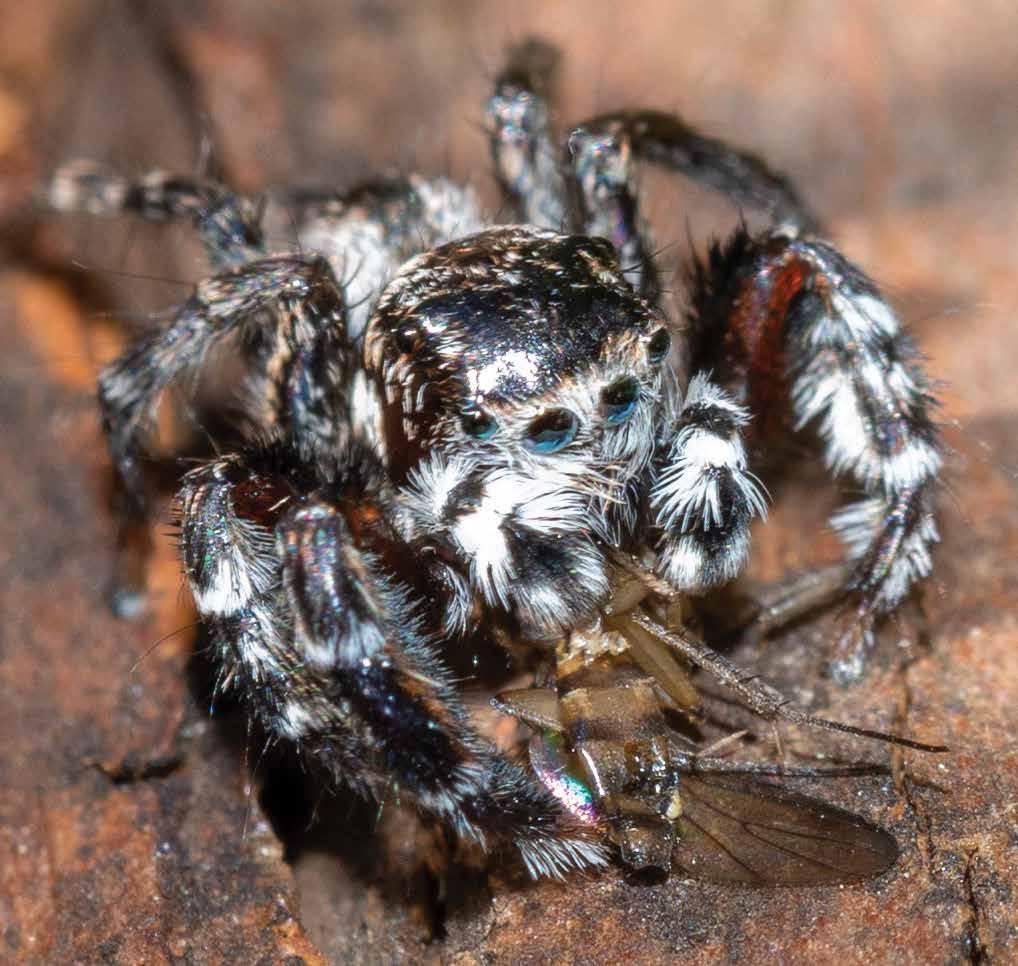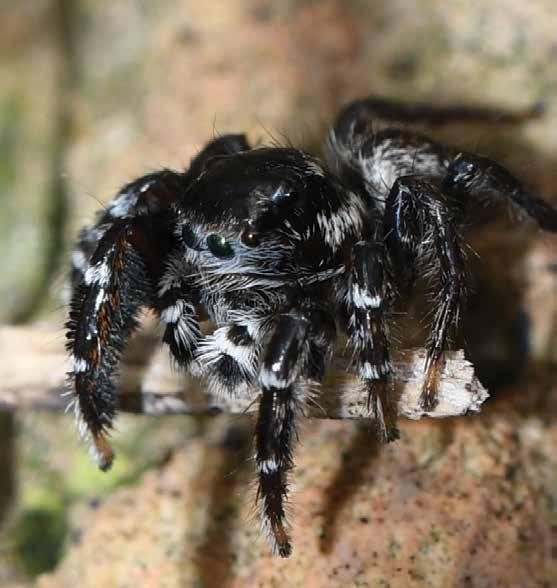
5 minute read
DESIGNER SPIDER DEBUTS WITH BUSH FOR LIFE
from ReLeaf Spring 2020
By Claire Bowman
During bushcare events and planting days, the quiet chatter of volunteers blends with the hum and ripple of rustling leaves, insects and bird call. Sometimes the voices rise above the thud of holes being dug or stakes being hammered, and sometimes the intermittent drilling of olive roots stops the conversation altogether. Pairs and groups of bushcarers move here and there, carefully avoiding natives while they treat weeds or put plants in the ground. For many of our volunteers, caring for the bush is more than just the bushcare itself – it’s about getting out in nature with others, banding together with a shared vision, having a laugh and sharing stories during a well-earned morning tea break.
Advertisement
When volunteer activities were forced to stop this year, many of us quickly missed the community side of bushcare. However, striking out solo has reignited the joy of being alone in the bush, without the industrious hum of activity. In quiet moments, the solitude becomes a blessing. The stillness of a single human visitor emboldens hidden creatures to emerge from beneath leaves or between dark folds and curls of bark.
As our bushcare activities resumed in July, I talked to Belinda Copland, a herpetologist and Bush For Life volunteer who’d spent her time off in the bushland north of Adelaide. She spent many days wandering slowly through the Bush For Life sites at Willaston Cemetery and Pengilly Scrub, hunting for tiny, furry spiders.
According to CSIRO's Australian National Insect Collection 1 , only 2,700 species of spider have been scientifically described in our vast and ecologically diverse country. This is just a fraction of the true number, which they estimate at 10,000 species, from the tiniest colourful peacock spider 2 to the massive whistling tarantula 3 , big enough to snack on birds.
The particular critter we hope to find when I meet Belinda at Willaston is only about 5 millimetres long, approximately the size of a grain of rice. Named Jotus karllagerfeldi after fashion icon Karl Lagerfeld, the stylish spider has large, shining black eyes not unlike Lagerfeld’s dark glasses. The scientists who described it last year noted its distinctive black and white markings were reminiscent of the fashion designer’s iconic dark gloves and high, white Kent collar.
This black and white brushed jumping spider, first recorded near Dalby in Queensland, was the
FROM TOP: Jumping spiders are often found on curled bark, ready to hide at short notice.
Jotus karllagerfeldi male at Willaston Cemetery.

specimen that started Belinda on her hunt for tiny arachnids. “I found that one karllagerfeldi, and then I was hooked”, she tells me matter-offactly. “For a while there, every time I came [to Willaston Cemetery] I was finding the black and white brushed jumpers”. Since that first find, Belinda has photographed many females and several males at the site, all tiny and covered with fine fur.
“It’s like looking for orchids … you train your eyes to look for tiny things”, Belinda tells me as we walk through the bush, squinting through the midday sun into the low scrub. “It’s just a matter of walking slowly and sneaking up … just picking shrubs at random …”
“The females do tend to like hanging on the bark because they can hide underneath it fairly easily”.
However, she tries to temper my expectations, warning me that no matter how good your eyesight, spider seeking is very much a game of luck. Recently she hasn’t seen as many jumping spiders as usual – perhaps it’s the time of year. “I quite often come in and don’t find anything”.
Belinda tells me that after finding several spiders at Willaston Cemetery, she’d decided to actively search for Karl Lagerfeld spiders at Pengilly Scrub, a nearby Bush For Life site with similar vegetation. After initially finding a few females, Belinda spent several days quietly peering through the leaves of sea box 4 and saltbush 5 and peeking under curls of dried bark before she finally came across a male and could officially record Pengilly Scrub as another location for the species.
By the time we meet in July, Belinda has spent many hours searching and photographing jumping spiders. “I’d come in here and I’d say to my daughter ‘I’m just going to go take some photos, I’ll be back in an hour’ and some days it was four hours later …” she says.
As well as Karl Lagerfeld’s spiders, Belinda has recorded several other species of tiny jumping spider at both sites.
While Belinda can happily spend hours searching and getting her dose of nature during lockdown, the benefit of her “Covid hobby” reaches well beyond her own wellbeing. By identifying species in new locations, she’s helping to promote the great biodiversity of our local bushland and the importance of the work she and other volunteers normally do on Bush For Life sites.
As a scientist herself, Belinda was perhaps more aware of the lack of records of species at the sites. “I had noticed on Atlas of Living Australia that there was no real knowledge of invertebrate life at either Willaston Cemetery or Pengilly.” Belinda was the first to record J. karllagerfeldi at both sites, as well as finding one at Marino Conservation Park while doing reptile surveys. She’s also recorded peacock spiders and other jumping spiders 6 , some species of which are yet to be identified from her photographs. Belinda is a strong advocate for the bush, and for taking time to observe your surroundings. “Whenever outdoors I try to remember to take at least fifteen minutes to slow down and closely observe what is present around me. This can be therapeutic … with the added benefit of discovering new and exciting things.”
As many long-time bushcarers will tell you, discovering new species of plants, animals and insects is one of the joys of getting to know a particular patch of bush. With weeds under control, Bush For Life sites provide an ideal safe haven for so many creatures, from the large to the very, very small. Spiders might not be the most loved amongst the residents you’ll find on a site, but the Karl Lagerfeld’s spider


has a certain charisma, not unlike its namesake. Though Belinda and I didn’t find one on our walk through Willaston Cemetery, I came away with an important lesson: you never know what you might find in the bush if you tread lightly, move slowly and look closely. 1) https://www.csiro.au/en/Research/ Collections/ANIC 2) Maratus sp. 3) Selenocosmia crassipes 4) Alyxia buxifolia 5) Rhagodia sp. 6) Saitis sp., Sandalodes sp., Maratus sp.
ABOVE FROM TOP: Belinda Copland, Bush For Life volunteer, herpetologist and budding photographer.








